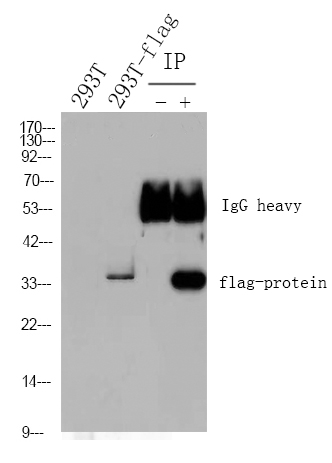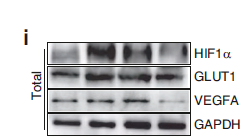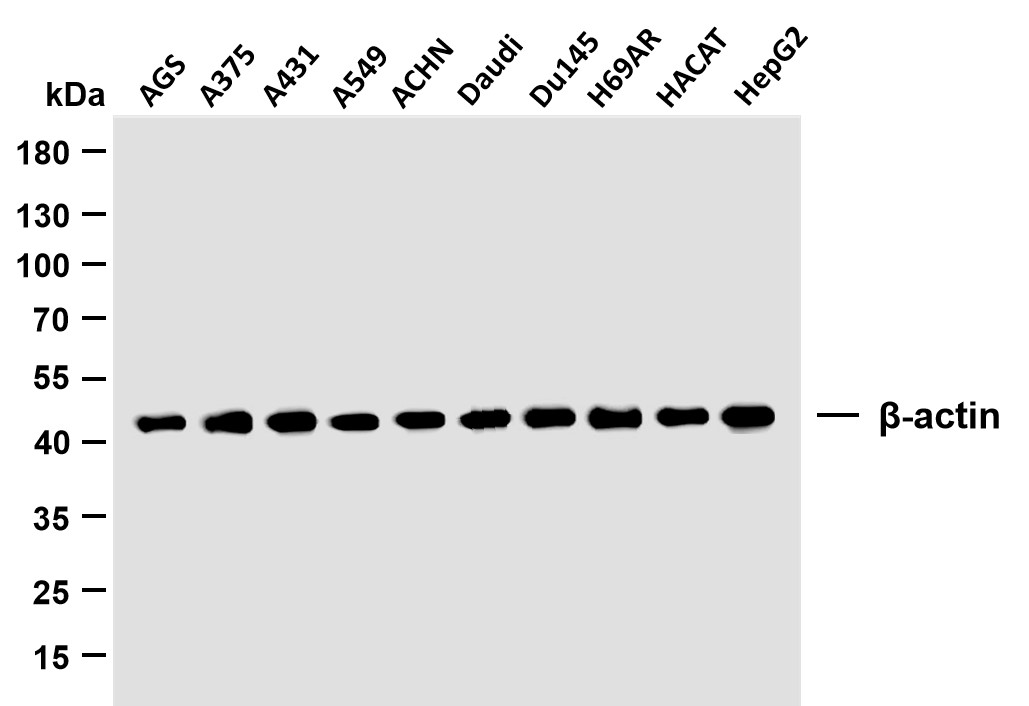
主要信息
Target
Cav1.3
Host Species
Rabbit
Reactivity
Human, Rat, Mouse
Applications
IHC, IF
MW
245kD (Observed)
Conjugate/Modification
Unmodified
货号: YN5642
规格
价格
货期
数量
200μL
¥3,780.00
现货
0
100μL
¥2,300.00
现货
0
40μL
¥960.00
现货
0
加入购物车


已收藏


收藏
详细信息
推荐稀释比
IHC 1:100-200; IF 1:50-200
组成
Liquid in PBS containing 50% glycerol, 0.5% BSA and 0.02% sodium azide.
特异性
Cav1.3 protein(A202) detects endogenous levels of Cav1.3
纯化工艺
The antibody was affinity-purified from rabbit antiserum by affinity-chromatography using epitope-specific immunogen.
储存
-15°C to -25°C/1 year(Do not lower than -25°C)
浓度
1 mg/ml
实测条带
245kD
修饰
Unmodified
克隆性
Polyclonal
同种型
IgG
相关产品
抗原&靶点信息
免疫原:
Synthetic Peptide of Cav1.3 AA range: 1060-1140
展开内容
特异性:
Cav1.3 protein(A202) detects endogenous levels of Cav1.3
展开内容
基因名称:
CACNA1D
展开内容
蛋白名称:
Voltage-dependent L-type calcium channel subunit alpha-1D (Calcium channel, L type, alpha-1 polypeptide, isoform 2) (Voltage-gated calcium channel subunit alpha Cav1.3)
展开内容
别名:
Voltage-dependent L-type calcium channel subunit alpha-1D ;
Calcium channel, L type, alpha-1 polypeptide, isoform 2 ;
Voltage-gated calcium channel subunit alpha Cav1.3 ;
Calcium channel, L type, alpha-1 polypeptide, isoform 2 ;
Voltage-gated calcium channel subunit alpha Cav1.3 ;
展开内容
背景:
calcium voltage-gated channel subunit alpha1 D(CACNA1D) Homo sapiens Voltage-dependent calcium channels mediate the entry of calcium ions into excitable cells, and are also involved in a variety of calcium-dependent processes, including muscle contraction, hormone or neurotransmitter release, and gene expression. Calcium channels are multisubunit complexes composed of alpha-1, beta, alpha-2/delta, and gamma subunits. The channel activity is directed by the pore-forming alpha-1 subunit, whereas the others act as auxiliary subunits regulating this activity. The distinctive properties of the calcium channel types are related primarily to the expression of a variety of alpha-1 isoforms, namely alpha-1A, B, C, D, E, and S. This gene encodes the alpha-1D subunit. Several transcript variants encoding different isoforms have been found for this gene. [provided by RefSeq, Dec 2012],
展开内容
功能:
Alternative products:Additional isoforms seem to exist,Domain:Each of the four internal repeats contains five hydrophobic transmembrane segments (S1, S2, S3, S5, S6) and one positively charged transmembrane segment (S4). S4 segments probably represent the voltage-sensor and are characterized by a series of positively charged amino acids at every third position.,Function:Voltage-sensitive calcium channels (VSCC) mediate the entry of calcium ions into excitable cells and are also involved in a variety of calcium-dependent processes, including muscle contraction, hormone or neurotransmitter release, gene expression, cell motility, cell division and cell death. The isoform alpha-1D gives rise to L-type calcium currents. Long-lasting (L-type) calcium channels belong to the 'high-voltage activated' (HVA) group. They are blocked by dihydropyridines (DHP), phenylalkylamines, benzothiazepines, and by omega-agatoxin-IIIA (omega-Aga-IIIA). They are however insensitive to omega-conotoxin-GVIA (omega-CTx-GVIA) and omega-agatoxin-IVA (omega-Aga-IVA).,polymorphism:A change from seven to eight ATG trinucleotide repeats, resulting in an additional N-terminal methionine, has been found in a patient with non-insulin-dependent diabetes mellitus (NIDDM).,similarity:Belongs to the calcium channel alpha-1 subunit (TC 1.A.1.11) family.,subunit:Voltage-dependent calcium channels are multisubunit complexes, consisting of alpha-1, alpha-2, beta and delta subunits in a 1:1:1:1 ratio. The channel activity is directed by the pore-forming and voltage-sensitive alpha-1 subunit. In many cases, this subunit is sufficient to generate voltage-sensitive calcium channel activity. The auxiliary subunits beta and alpha-2/delta linked by a disulfide bridge regulate the channel activity. Interacts with RIMBP2.,tissue specificity:Expressed in pancreatic islets and in brain, where it has been seen in hippocampus, basal ganglia, habenula and thalamus. No expression in skeletal muscle.,
展开内容
细胞定位:
Membrane ; Multi-pass membrane protein .
展开内容
组织表达:
Expressed in pancreatic islets and in brain, where it has been seen in cerebral cortex, hippocampus, basal ganglia, habenula and thalamus. Expressed in the small cell lung carcinoma cell line SCC-9. No expression in skeletal muscle.
展开内容
研究领域:
>>MAPK signaling pathway ;
>>Calcium signaling pathway ;
>>cGMP-PKG signaling pathway ;
>>cAMP signaling pathway ;
>>Cellular senescence ;
>>Cardiac muscle contraction ;
>>Adrenergic signaling in cardiomyocytes ;
>>Vascular smooth muscle contraction ;
>>Tight junction ;
>>Circadian entrainment ;
>>Retrograde endocannabinoid signaling ;
>>Glutamatergic synapse ;
>>Cholinergic synapse ;
>>Serotonergic synapse ;
>>GABAergic synapse ;
>>Dopaminergic synapse ;
>>Insulin secretion ;
>>GnRH signaling pathway ;
>>Oxytocin signaling pathway ;
>>Renin secretion ;
>>Aldosterone synthesis and secretion ;
>>Cortisol synthesis and secretion ;
>>GnRH secretion ;
>>Type II diabetes mellitus ;
>>Cushing syndrome ;
>>Growth hormone synthesis, secretion and action ;
>>Carbohydrate digestion and absorption ;
>>Alzheimer disease ;
>>Prion disease ;
>>Pathways of neurodegeneration - multiple diseases ;
>>Amphetamine addiction ;
>>Chemical carcinogenesis - receptor activation ;
>>Hypertrophic cardiomyopathy ;
>>Arrhythmogenic right ventricular cardiomyopathy ;
>>Dilated cardiomyopathy
>>Calcium signaling pathway ;
>>cGMP-PKG signaling pathway ;
>>cAMP signaling pathway ;
>>Cellular senescence ;
>>Cardiac muscle contraction ;
>>Adrenergic signaling in cardiomyocytes ;
>>Vascular smooth muscle contraction ;
>>Tight junction ;
>>Circadian entrainment ;
>>Retrograde endocannabinoid signaling ;
>>Glutamatergic synapse ;
>>Cholinergic synapse ;
>>Serotonergic synapse ;
>>GABAergic synapse ;
>>Dopaminergic synapse ;
>>Insulin secretion ;
>>GnRH signaling pathway ;
>>Oxytocin signaling pathway ;
>>Renin secretion ;
>>Aldosterone synthesis and secretion ;
>>Cortisol synthesis and secretion ;
>>GnRH secretion ;
>>Type II diabetes mellitus ;
>>Cushing syndrome ;
>>Growth hormone synthesis, secretion and action ;
>>Carbohydrate digestion and absorption ;
>>Alzheimer disease ;
>>Prion disease ;
>>Pathways of neurodegeneration - multiple diseases ;
>>Amphetamine addiction ;
>>Chemical carcinogenesis - receptor activation ;
>>Hypertrophic cardiomyopathy ;
>>Arrhythmogenic right ventricular cardiomyopathy ;
>>Dilated cardiomyopathy
展开内容
信号通路
Cellular Processes >> Cell growth and death >> Cellular senescence
Cellular Processes >> Cellular community - eukaryotes >> Tight junction
Organismal Systems >> Endocrine system >> Insulin secretion
Organismal Systems >> Endocrine system >> GnRH signaling pathway
Organismal Systems >> Endocrine system >> Oxytocin signaling pathway
Organismal Systems >> Endocrine system >> Growth hormone synthesis, secretion and action
Organismal Systems >> Endocrine system >> Aldosterone synthesis and secretion
Organismal Systems >> Circulatory system >> Cardiac muscle contraction
Organismal Systems >> Circulatory system >> Adrenergic signaling in cardiomyocytes
Organismal Systems >> Circulatory system >> Vascular smooth muscle contraction
Organismal Systems >> Nervous system >> Glutamatergic synapse
Organismal Systems >> Nervous system >> Cholinergic synapse
Organismal Systems >> Nervous system >> Dopaminergic synapse
Human Diseases >> Neurodegenerative disease >> Alzheimer disease
Human Diseases >> Neurodegenerative disease >> Prion disease
Human Diseases >> Neurodegenerative disease >> Pathways of neurodegeneration - multiple diseases
Environmental Information Processing >> Signal transduction >> MAPK signaling pathway
Environmental Information Processing >> Signal transduction >> Calcium signaling pathway
Environmental Information Processing >> Signal transduction >> cAMP signaling pathway
Environmental Information Processing >> Signal transduction >> cGMP-PKG signaling pathway
文献引用({{totalcount}})
货号: YN5642
规格
价格
货期
数量
200μL
¥3,780.00
现货
0
100μL
¥2,300.00
现货
0
40μL
¥960.00
现货
0
加入购物车


已收藏


收藏
Recently Viewed Products
Clear allToggle night Mode
{{pinfoXq.title || ''}}
Catalog: {{pinfoXq.catalog || ''}}
Filter:
All
{{item.name}}
{{pinfo.title}}
-{{pinfo.catalog}}
主要信息
Target
{{pinfo.target}}
Reactivity
{{pinfo.react}}
Applications
{{pinfo.applicat}}
Conjugate/Modification
{{pinfo.coupling}}/{{pinfo.modific}}
MW (kDa)
{{pinfo.mwcalc}}
Host Species
{{pinfo.hostspec}}
Isotype
{{pinfo.isotype}}
产品 {{index}}/{{pcount}}
上一个产品
下一个产品
{{pvTitle}}
滚轮缩放图片
{{pvDescr}}



















